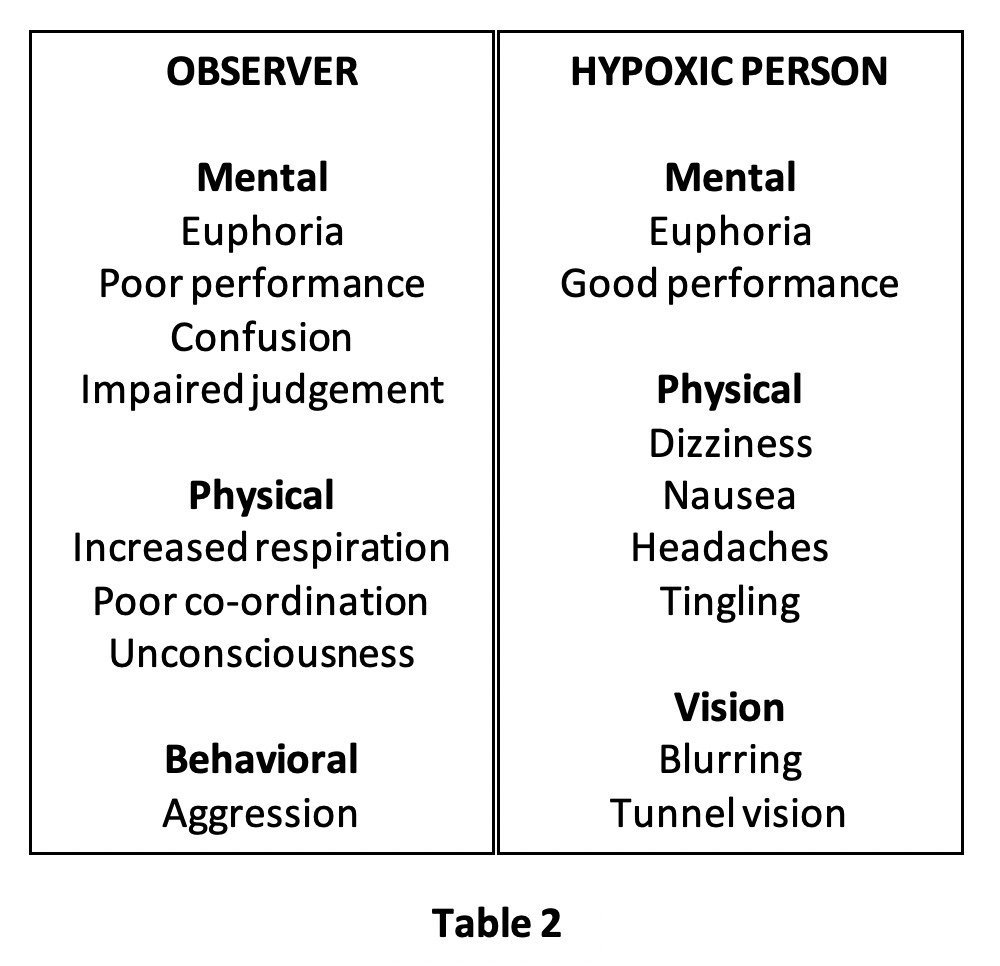Estimated reading time 7 minutes, 23 seconds.
Just like flying in instrument meteorological conditions (IMC), instrument flight rules (IFR) flight permits operations at high altitudes — often well above inclement weather and icing levels. However, as with any technology, there are dangers that must be fully understood if they are to be avoided. In high-altitude flight, hypoxia is one of those dangers, silently lurking in the background — as evidenced by the following real-life events.
Getting high
First, I recall being very confused. On one hand, I felt great — almost euphoric; on the other hand, I felt drowsy and muddled. I was struggling to focus on the cabin pressure reading of 30,000 feet, and struggling to compute the fuel remaining on my knee clipboard. I just couldn’t get my act together. I thought I heard someone call out, “45 seconds!” and that was the last thing I remembered before everything went black.
Unconscious at FL300 is not a good position to be in if your primary job is to fly the aircraft. Fortunately for me, just after I passed out, an oxygen mask was pushed over my face, and within a few seconds I was back with the living — fully conscious, and fully aware that I was not, in fact, at FL300. Rather, I was on solid ground in a hypobaric chamber during High Altitude Indoctrination (HAI) training.

Incidentally, I did, indeed, hear “45 seconds.” It was the baro chamber
technician who was closely monitoring my progress, declaring that 45
seconds had elapsed from the time my oxygen mask came off to me
passing out. A much better outcome than what happened in the next situation.
On Oct. 25, 1999, air traffic control lost radio contact with a Learjet that had departed Orlando, Florida, enroute to Dallas. The aircraft had veered off course 25 minutes after takeoff, climbing through 37,000 feet. Air National Guard F-16s were scrambled to intercept the Learjet as it continued to head northwest. The military pilots reported the windshield appeared to be frosted or covered with condensation, blocking any view of the cabin interior.
After approximately four hours, the Learjet ran out of fuel and began a rapid descent. It impacted the ground at near supersonic speed and at an extremely steep angle, leaving nearly none of the plane’s components intact.
Almost a year later, the National Transportation Safety Board (NTSB) released its final accident investigation report. The probable cause was the loss of consciousness of the pilot and co-pilot, caused by a loss of cabin pressure and failure to get emergency oxygen.
The NTSB’s report also listed a number of safety recommendations to the Federal Aviation Administration (FAA), including revising existing guidance about high-altitude flight operations — with a specific focus on time of useful consciousness and performance degradation following loss of pressurization.
Higher and higher
Hypoxia is when our cells do not receive the oxygen they need to function properly — especially the brain and eyes. With increasing altitude, the air has less available oxygen. Below 10,000 feet, the effects are negligible unless performing a physically demanding task. Above this altitude, the effects not only become increasingly dangerous, they are insidious in that they creep up without the pilot
knowing it.
Table 1 shows the time of useful consciousness (TUC) for various altitudes. It is important to note that these figures are for a healthy person. Those with compromised respiratory systems, such as smokers, have lower TUCs.

Intensifying the problem with hypoxia is the fact that it brings on a feeling of well-being, which directly affects your assessment of the situation. Table 2 shows the difference between what an observer would note, compared to someone suffering from hypoxia.

How high can you fly?
One of the most effective ways of acquainting yourself
with hypoxia and its effects is by taking a ride in a hypobaric chamber, where the air inside is gradually withdrawn to simulate various altitudes. You will be surprised with how quickly your performance and vision suffer with the onset of oxygen deprivation. As you go ‘higher and higher,’ you will be asked to do simple tasks such as filling out a log card, or simply doing basic arithmetic problems on a clipboard.
Once the ride is over and you review your responses, you will be amazed by how even a simple addition problem can result in a scrawl on the answer pad.
How high can you fly safely without supplemental oxygen? Probably not as high as you think. But knowing the symptoms of hypoxia is valuable knowledge to keep in mind the next time you are planning a trip over the mountains or above the weather.
Finally, remember the prime rule of flying: have the same number of landings as takeoffs. Having a working supplemental oxygen system — and knowing how and when to use it — is a good first step in keeping the math equal.








